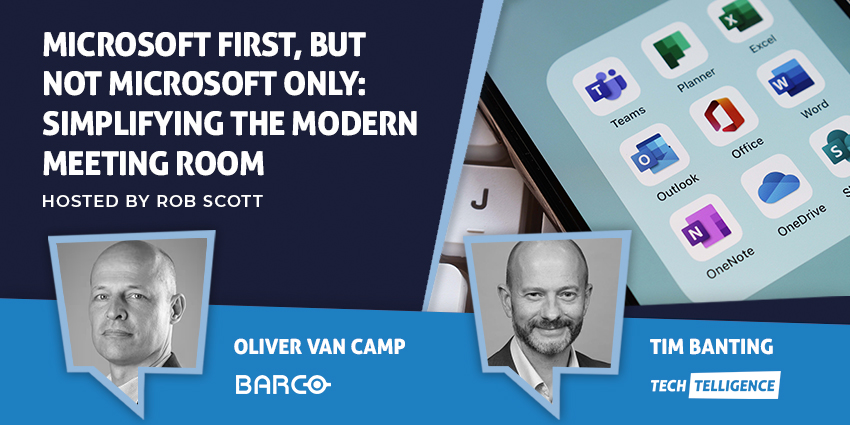Deciding which endpoints to deploy in your business can be a mundane chore. Or it can be exciting as you get to play with lots of new cool tech. However, you see it, devices and endpoints still play a huge part in communications and collaboration strategies. Whether you are a small business or a large enterprise, it’s likely you’re going to need something to communicate on.
There will be specific deciding factors for each business. But there will also be a multitude of standard features and functionality you look for in a handset or a headset. Or you could be a reseller or service provider in the VoIP phone market looking for a new endpoint to attach your cloud phone system offering.
What’s unclear right now is the endpoint of your choosing. What’s certain is that the market is full of great endpoints for you to choose from.
Let’s look at the market leaders.
Grandstream
 Grandstream provides a range of devices from basic IP phone to WiFi access points. Their portfolio also includes HD IP security cameras and specialist DECT solutions. IP hardware is very much Grandstream’s game.
Grandstream provides a range of devices from basic IP phone to WiFi access points. Their portfolio also includes HD IP security cameras and specialist DECT solutions. IP hardware is very much Grandstream’s game.
As far as endpoints for your phone system are concerned, the higher end of the portfolio includes the GXP2100 series designed for heavy telephony users like receptionists and secretaries. For those that transfer calls often, the GXP2200EXT extension module comes with coloured speed dials and busy lamp fields to identify open lines and route calls effectively. These higher end phones don’t just enhance the customer experience by making the transfer swifter but improve overall productivity as users can free-up their line quicker.
At the lower end of the portfolio, Grandstream also caters for simple requirements – perhaps users using a headset attached or users infrequently visiting the office. The lightweight models are ideal for hotel rooms, information booths, and warehouse deployments.
We also see the DP750 and DP720 DECT options at the head of the portfolio and a cordless WiFi IP phones for environments that DECT doesn’t suit.
If you’re looking to refresh your entire hardware estate, Grandstream’s diverse portfolio – including elements outside IP telephony – is a real draw.
Avaya
![]() Avaya has recently shaken up the endpoint market by delivering a range of platform agnostic devices and focusing on delivery a desktop experience rather than just a handset on a desk. In November 2018, Avaya debuted a new line of 17 platform agnostic open SIP devices and has recently made enhancements to the series.
Avaya has recently shaken up the endpoint market by delivering a range of platform agnostic devices and focusing on delivery a desktop experience rather than just a handset on a desk. In November 2018, Avaya debuted a new line of 17 platform agnostic open SIP devices and has recently made enhancements to the series.
Avaya is keen to showcase the desktop environment one is a place where works gets done and isn’t just somewhere to store a device. By integrating with third party applications like Knowmail, Avaya is making the desk phone more than just a phone. Users can view their emails and meetings for the day across devices – now including the desk phone.
In the headset world, Avaya has recently trademarked Acoustic Edge. This is designed to provide better acoustic hearing protection to individuals in the office or contact centre and works by measuring the energy in a signal and dynamically limiting the output to protect both sound quality, and user hearing.
You can read a full review of the L100 headset here and see it in action below.
https://youtu.be/vVx6GBAYyA0
Cisco
 Cisco is one of the most influential brands in the Unified Comms and Contact Centre markets. Having provided IP handsets, and non-IP handsets before that, Cisco has most recently delved into the headset market. Suggestion is this is to rival Plantronics since their acquisition of Polycom. But it also diversifies their portfolio. Whatever the reason behind the move, Plantronics even include Cisco headsets in their own catalogue.
Cisco is one of the most influential brands in the Unified Comms and Contact Centre markets. Having provided IP handsets, and non-IP handsets before that, Cisco has most recently delved into the headset market. Suggestion is this is to rival Plantronics since their acquisition of Polycom. But it also diversifies their portfolio. Whatever the reason behind the move, Plantronics even include Cisco headsets in their own catalogue.
Cisco already provide handsets to end users and service providers alike. West UC is a partner that opts to sell Cisco handsets to accompany their UCaaS platform, for example.
The headset options recently introduced are labelled the 500 series. The Cisco 521 is a simple single ear piece and the Cisco 522 adds a second earpiece. Both come with in call indicators and can be connected via USB and 3.5mm. The Cisco 531 and 532 (single and dual ear) add RJ9 compatibility. The Cisco 561 and 562 introduce DECT functionality to let you users roam from their desks.
Yealink
 If you’re looking for a fully featured open SIP phone portfolio then Yealink are a popular option. Known for their tight integration with Skype for Business and Microsoft Teams, Yealink handsets and accessories are compatible with most cloud and SIP based platforms.
If you’re looking for a fully featured open SIP phone portfolio then Yealink are a popular option. Known for their tight integration with Skype for Business and Microsoft Teams, Yealink handsets and accessories are compatible with most cloud and SIP based platforms.
The highest end of the portfolio sees the flagship smart video phone, the SIP-VP59. Featuring an HD camera for video calling, this handset often doubles as an executive phone and a huddle room device. It comes with a large, backlit and high resolution colour touchscreen, an intuitive layout of hard keys and multi coloured LED indicators and a fully adjustable display to cover all angles and lighting.
Whilst Yealink covers entry phone to high quality video conferencing, the most notable element to their portfolio is the T56A Teams edition with a native Microsoft Teams display. Standard features for this Microsoft Teams specific device include:
- Optima HD voice
- 7″ 1024 x 600 capacitive touch screen
- Yealink Noise Proof Technology
- Expansion modules for Skype for Business
Plantronics
 Following a shock move to acquire Polycom, Plantronics has coupled its headset market dominance with Polycom market leading share of the IP handset market.
Following a shock move to acquire Polycom, Plantronics has coupled its headset market dominance with Polycom market leading share of the IP handset market.
Plantronics has stuck to its root by continuing its Blackwire corded series. Plantronics offers also offers its C series DECT offering with a quick disconnect cord which lets users walk away from their phones without removing the headset. The consumer side of the range sees the BackBeat Pro series which boasts wireless connectivity and noise cancelling technology – ideal for the remote or mobile worker that needs to disconnect from a distracting environment.
Having acquired Polycom, Plantronics portfolio also includes a wide range of IP handsets ranging from the entry level VVX300 series up to the Polycom Trio 8800. The Polycom Trio is arguably Polycom’s flagship product, and is a top of the range video conferencing endpoint featuring legendary Polycom HD audio, video interoperability and Skype for Business integration. Users can book meeting rooms and enable one-touch meeting joining by combining their Polycom conferencing units with their Microsoft Office 365 strategy.
Snom
 Jason Green, Marketing Manager at Snom, told me that since Snom became part of the VTech family, the resource in development had tripled. That is clearly demonstrated in their recent round of updates to their range of handsets.
Jason Green, Marketing Manager at Snom, told me that since Snom became part of the VTech family, the resource in development had tripled. That is clearly demonstrated in their recent round of updates to their range of handsets.
Jason said that despite revamping their user interface recently, “just looking good isn’t enough for us”. Snom has recently added a Quick LookUp feature, Smart Labels and a light sensor to boost productivity as well as UI.
Snom is incredibly proud of its high standards in engineering and suggest it comes from their German heritage. Snom state on their website “We strive to achieve perfection in all aspects of hardware development with unparalleled craftsmanship, elegant design, practicality and cost effectiveness”.
Snom’s catalogue ranges from their basic level D1XX series for simple requirements, D3XX series for mid-range frequent users to the D7XX series for executive and receptionist style users. Uniquely, Snom produced its desktop handsets in both black and white – allowing for some personality in the workplace.
You can read UC Today’s full review of their latest D385 handset here.
Jabra
 Jabra provides a wide range of headsets ranging from sports to business use. Jabra break down their business headsets into three main categories:
Jabra provides a wide range of headsets ranging from sports to business use. Jabra break down their business headsets into three main categories:
- Call Centric: users who talk and listen on the phone for a living, commonly tied to a desk
- Task Based: users that work with information that need to both concentrate and collaborate
- On The Move: users who are truly mobile and make their calls on the go
For desk based users, we see the Jabra Biz 2400II which is built to last and comfortable to wear all day long. The Jabra Engage series is the step for users who work in busier environments and must remove themselves from the noise. This headset features noise cancelling and wireless capabilities.
The Jabra Evolve and Speak series are ideal for users that need to get away from their desks to collaborate. The Evolve is dual eared and wireless so you can move around. The Speak is a portable conference phone which can be connected via USB. This is ideal for frequent travellers to enable further mobility on top of their softphone setup.
For users always on the move, Jabra also provide an earpiece-style headset in the Jabra Motion office and Jabra Stealth UC – ideal for the car or packed train.
Konftel
 Konftel specialise in conferencing endpoints and regularly partners with the likes of Alcatel-Lucent Enterprise, BroadSoft, Avaya, Cisco, Digium and Huawei.
Konftel specialise in conferencing endpoints and regularly partners with the likes of Alcatel-Lucent Enterprise, BroadSoft, Avaya, Cisco, Digium and Huawei.
Konftel is extremely proud of its development history and claims to deliver perfection every time after almost 30 years honing their OmniSound® audio technology.
Konftel’s portfolio is typically broken down like this:
- Konftel 300 IP – built-in bridging function, USB for collaboration and suited for around 20 people
- Konftel 300W – introduces portability through wireless DECT and 60 hours of battery
- Konftel Ego – a smaller, portable unit ideal for storing in your bag and suited for meetings with around 6 people
- Konftel 55W – introduces integration with leading UC clients and Bluetooth functionality
- Konftel 300M – becomes a true mobile conference phone, enabling HD voice over 3G connectivity
- Konftel 300 – connectable to external mics and PA systems
Each of the advanced conferencing endpoints also come with option call recording which is saved using the slot for a memory card.
Sennheiser
![]() Sennheiser will be a familiar brand from the consumer world. Delving into business comms was a great move for Sennheiser. I can’t stress how important it is for a B2B brand to market, sell and provide a user experience like they would a B2C customer.
Sennheiser will be a familiar brand from the consumer world. Delving into business comms was a great move for Sennheiser. I can’t stress how important it is for a B2B brand to market, sell and provide a user experience like they would a B2C customer.
With all the success and knowledge Sennheiser has gained providing high quality headphones and audio equipment, the step into telephony is a bonus for the business user that wants the same kind of audio quality they have in their lounge or when out running.
Sennheiser’s most notable UC endpoint is the Sennheiser Presence Grey UC. Designed for mobility workers, this earpiece style headset delivers high quality audio usually associated with Sennheiser and is compatible with Skype for Business. With best in class microphones and noise filtering technologies, the Presence Grey UC ensures a clear communication experience also for both you and the user on the other end. Three digital microphones work seamlessly together with Sennheiser’s advanced Own-Voice-Detector, SpeakFocus™ and WindSafe™ technologies to ensure crystal clear audio wherever and whenever.
AudioCodes
 AudioCodes is another vendor that has a vast portfolio. Their catalogue includes Session Border Controllers (SBCs) through to media gateway but most recently has seen a focus in the IP endpoint arena.
AudioCodes is another vendor that has a vast portfolio. Their catalogue includes Session Border Controllers (SBCs) through to media gateway but most recently has seen a focus in the IP endpoint arena.
Their handsets include huddle room solutions for small meeting spaces, fully integrated with Skype for Business. We also see the native Microsoft Teams C450HD IP phone which includes a feature-rich, executive high-end business phone for the Microsoft Teams and Skype for Business users is. It supports single-click switch over between Microsoft Teams with a native client experience.
The 400 series desk phones range from entry level to executive experience with more features added as you go through the tiers. Each AudioCodes device comes with HD voice, a simple workflow design for best usability, clear and intuitive menus and are certified by multiple UC vendors.
Whether shopping for an end-user business, channel partner or service provider, all these brands should make your shortlist. Included were a range of handset, headset and conferencing devices. Of which, some are inter-operable with each other and will play nicely across differently platforms.






